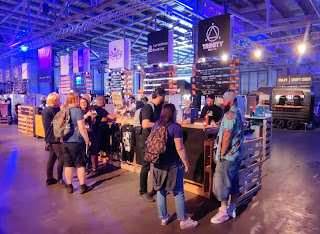It’s one of those questions that's really hard to answer. I mean, first of all you have to set parameters – what terms do you judge “best” by? And what do you mean by “beer” – craft beer, or anything from industrial lager onwards? On top of that, how reliable is your data to start with?
But in the quest for a headline – and to incidentally promote its other activities – the Money.co.uk website has given it a go. Working on the three measures of price, brewery density and bar density, it lists the top three as Asheville (in North Carolina), Prague and Krakow, with major craft beer destinations such as Denver, San Francisco and yes, London, way down the list.
Top 10 Best Cities in the World for Beer Drinkers
Rank | City | Country | Breweries per 10,000 people | Bars, pubs & clubs per 10,000 people | Average price per pint (£) | Overall score |
1 | Asheville | United States | 2.80 | 7.86 | £3.58 | 8.41 |
2 | Prague | Czech Republic | 0.76 | 5.86 | £1.34 | 6.88 |
3 | Kraków | Poland | 0.39 | 2.46 | £1.89 | 4.79 |
4 | Fort Collins | United States | 1.29 | 1.41 | £2.87 | 4.72 |
5 | Cincinnati | United States | 1.02 | 2.70 | £3.58 | 4.46 |
5 | Buenos Aires | Argentina | 0.21 | 0.89 | £1.17 | 4.46 |
7 | Austin | United States | 0.53 | 2.69 | £2.87 | 4.4 |
8 | Dublin | Ireland | 0.54 | 5.66 | £4.70 | 4.36 |
9 | Wrocław | Poland | 0.42 | 0.92 | £1.70 | 4.35 |
10 | Grand Rapids | United States | 0.85 | 1.59 | £2.87 | 4.31 |
What they’ve done is to take brewery numbers from Ratebeer, venue counts from TripAdvisor, and the average price per pint from cost-of-living tracking site Numbeo.
Those who know the US scene will not be surprised by presence there of Asheville, a party-town full of small breweries, nor I suspect by Fort Collins, where 20+ craft brewers, most notably New Belgium and Odell, have grown in the shadow of a massive Budweiser factory. Prague and Krakow, on the other hand, benefit more from low beer prices and thriving nightlife.
Pricing – or rather the extortionate rate of beer tax in the UK – is a big part of what pushes London to an absurd 39th out of 40. And that’s despite London having more than twice as many breweries as any other city on the list, and being second only to Tokyo in its number of venues. Well, that and the fact that Money’s analyst has normalised by population, which drops sprawling London down below even Antwerp and Anchorage on "Breweries per 10,000 people".
Re-sorting the full list of 40 cities it’s interesting to see other effects apparently at work. For example, craft beer meccas such as Portland Oregon, San Diego and Denver report beer prices around $6 a pint, while in the likes of Kansas City and Milwaukee it’s nearer $4.
Is that because more people in the latter two drink cheaper macro, or because they’re less fashionable and wealthy areas, so prices are lower? I don’t know – although a quick look at Numbeo suggests that its data may not be the most reliable as it merely quotes average prices for “domestic” and “imported” beers. This is a crappy old Americanism from the days when the typical menu choice was Bud/Miller/Coors for Joe Regular, and Heineken or Amstel for Joe Posh.
It’s all a bit of fun though, and it certainly generates a few ideas for places to visit, as well as a picture of what you can expect to be charged in different countries around the world. Just don't take Money's promotion of debit cards as gospel – cash remains king in many places, including Germany where pre-pandemic habits are reasserting themselves.
Let's rephrase it them: what’s your favourite city for beers, and why?






